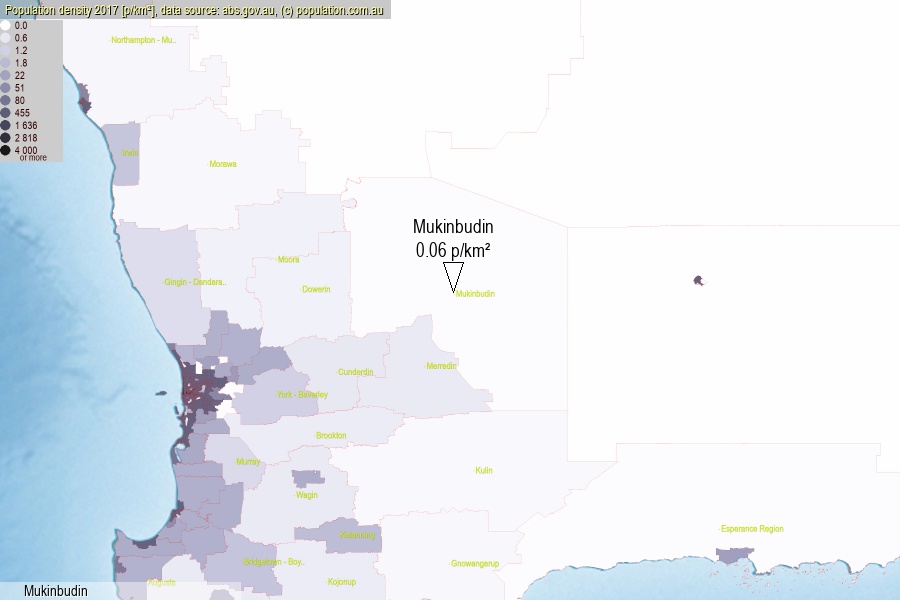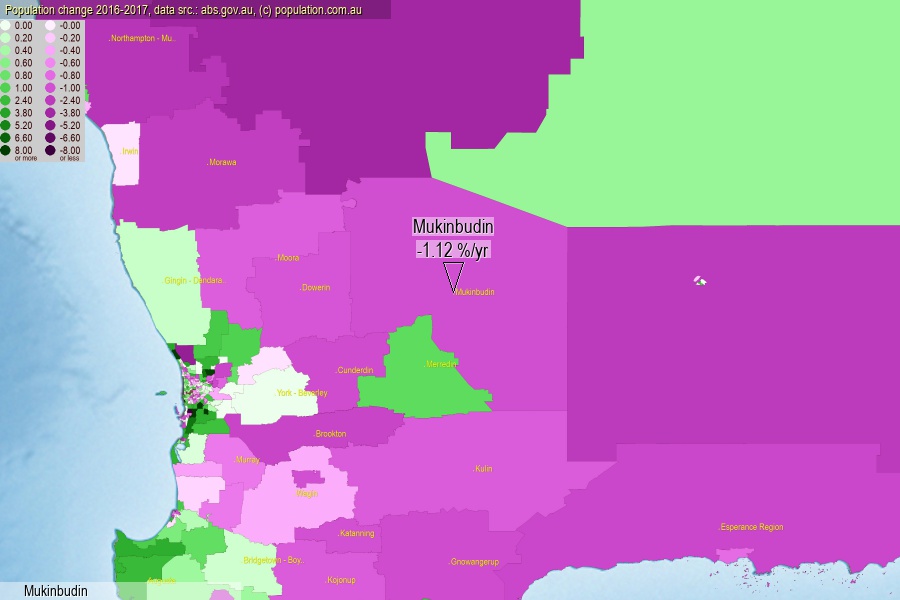 population.com.au
population.com.auLast official estimated population of Mukinbudin (as Statistical Area Level 2) was 3 182 people (on 2017-06-30)[2]. This was 0.01% of total Australian population and 0.123% of WA population. Area of Mukinbudin is 50 177.00 km², in this year population density was 0.06 p/km² . If population growth rate would be same as in period 2016-2017 (-1.12%/yr), Mukinbudin population in 2025 would be 2 908. [0]



Click to enlarge. Mukinbudin is located in the center of the images.
Population [people], population density [p./km²] and population change [%/year] [2]
View borders » (new window) [4]
[1991-1992] -0.57 %/Yr.
[1992-1993] +0.10 %/Yr.
[1993-1994] -0.16 %/Yr.
[1994-1995] +1.05 %/Yr.
[1995-1996] +0.96 %/Yr.
[1996-1997] -2.84 %/Yr.
[1997-1998] -3.71 %/Yr.
[1998-1999] -2.33 %/Yr.
[1999-2000] -4.36 %/Yr.
[2000-2001] -4.77 %/Yr.
[2001-2002] -1.91 %/Yr.
[2002-2003] -0.76 %/Yr.
[2003-2004] -2.26 %/Yr.
[2004-2005] -3.97 %/Yr.
[2005-2006] -4.13 %/Yr.
[2006-2007] -0.53 %/Yr.
[2007-2008] +0.33 %/Yr.
[2008-2009] -0.53 %/Yr.
[2009-2010] -1.36 %/Yr.
[2010-2011] -0.03 %/Yr.
[2011-2012] +0.14 %/Yr.
[2012-2013] -0.54 %/Yr.
[2013-2014] -2.86 %/Yr.
[2014-2015] -3.18 %/Yr.
[2015-2016] -3.04 %/Yr.
[2016-2017] -1.12 %/Yr.
[0] Calculated with linear interpolation from officially estimated population
[1] Read more about SA2 and Australian Statistical Geography Standard (ASGS) on abs.gov.au
[2] Population data from Australian Bureau of Statistics (Population and density: 2017; change: 2016-2017)
[3] Digital Boundaries: Australian Statistical Geography Standard (ASGS) 2016.
[4] Border coordinates are simplifyed using Ramer-Douglas-Peucker algorithm.